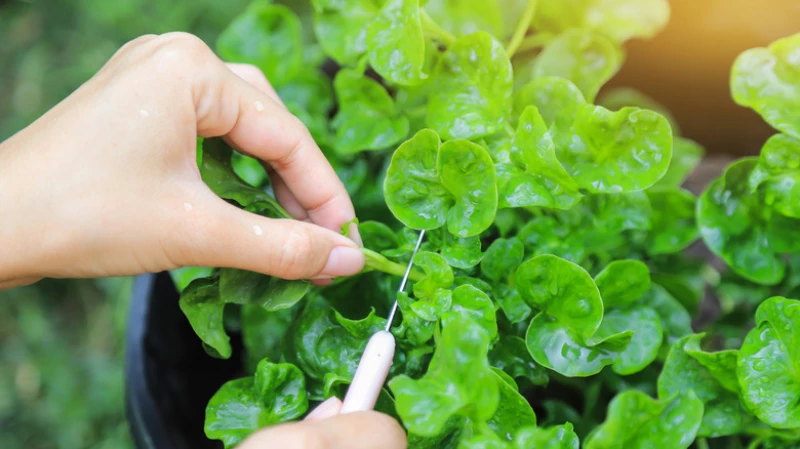Watercress, known for its peppery flavor and nutritional benefits, can be a great addition to salads. However, its invasiveness can be a concern when growing it in your garden. One way to prevent this is by planting watercress in pots, which contain its growth and prevent it from spreading uncontrollably. Whether you have a water feature in your backyard or simply a pot with water, you can successfully grow watercress in a controlled environment. This method allows you to enjoy this leafy green without worrying about it taking over your garden.
Understanding the invasiveness of watercress
The scientific name for the watercress species under discussion in this article is Nasturtium officinale. You might know it by other names such as; Eker, biller, bilure, rib cress, brown cress, teng tongue, long tails, or well grass. This Old World perennial (in the wild, at least) was originally imported to the U.S.A. from Europe at some point over the past few centuries. It thrives in shallow freshwater and boggy soil so long as the water is refreshed often and not stagnant. It has button-cute white flowers from spring through fall. Nowadays, you can find it in the wild and gardens in almost every U.S. state since it thrives in USDA Hardiness Zones 3 to 11. In hotter climates, it doesn't get as peppery as plants grown in the north.
It's worth noting that there are several native watercress species, for example, Rorippa floridana, and they aren't all considered invasive. Common watercress is such a problem because of its ability to multiply — and quickly. The plants are self-pollinating, and a single flower head produces 15 seed pods, each with 16 seeds apiece. What's more, branches produce new roots super efficiently, meaning the plant spreads out over the meandering stream or natural spring where it got its start. Once established, the thick mat of vegetation makes it increasingly difficult for other native aquatic plants to thrive. Watercress also has some pretty impressive defensive strategies.
The species is in the mustard or Brassicaceae family and, like its cousins — radishes, arugula, and kale, among many others — is a little spicy. The distinctive taste and smell are created by oils that activate when the plant is attacked by large and microscopic predators or dominated by competitors. It's a rather dramatic yet highly effective reaction botanists have dubbed the myrosinase-glucosinolate bomb. Since little can thrive in a patch of watercress, it's detrimental to the overall health of a wild aquatic ecosystem and your garden alike.
Attention all gardeners! If you take pride in growing a successful tomato crop, you may want to steer clear of planting watercress near your tomatoes this year. Not only does watercress have defensive capabilities that can affect your tomatoes, but it is also toxic to dogs, cats, and horses. So, if you have pets that like to nibble on your plants, it's best to avoid growing this aquatic greenery altogether.
The easy how-to for growing watercress in a planter
Watercress seeds and seedlings can be found at specialty nurseries across the U.S. If you're interested in growing watercress, you can purchase seeds from Peaceful Valley Farm & Garden Supply or seedlings from Crimson Sage Medicinal Plant Nursery. Alternatively, you can also root cuttings from existing plants or fresh bunches from the supermarket. To grow watercress successfully, ensure the plant's roots are constantly moist by placing the planter in a dish filled with water. Keep the planter in a sunny or partially shaded location, and you should see sprouts in about five days.
Enhance the fertility of your fresh watercress plot by adding one cup of garden fertilizer for every 25 square feet of soil. Remember to change the water weekly, opting for rainwater or bottled water for optimal growth. If you prefer, you can cultivate watercress in a water feature or pond, as mentioned earlier. Utilize aquatic pots, specially designed with holes for water drainage resembling plastic sieves, or choose planters with sufficient drainage holes. No outdoor space? No problem. Repurpose old takeaway containers to grow seedlings on your kitchen windowsill. Once you've mastered the art of growing watercress in containers, consider embarking on a new gardening adventure: this flavorful cress is one of the many edible plants suitable for an outdoor hydroponic garden.








